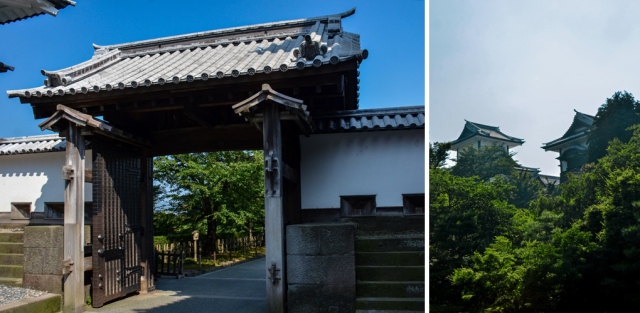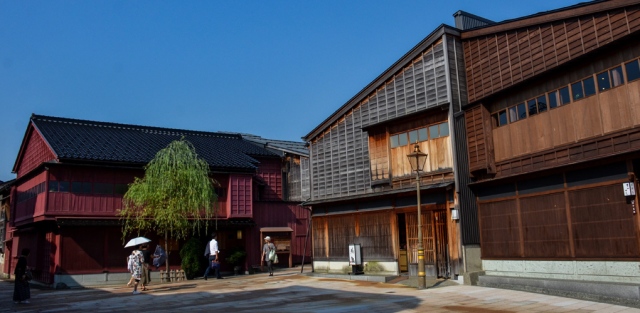During the Edo Period, Kanazawa served as the seat of the Maeda Clan, the second most powerful feudal clan after the Tokugawa in terms of rice production and fief size. Accordingly, Kanazawa grew to become a town of great cultural achievements, rivaling Kyoto and Edo. During World War Two, Kanazawa escaped destruction by air raids and consequently, parts of the old castle town, such as the Nagamachi samurai district and chaya entertainment districts, have survived in pretty good condition.
Kanazawajō
From 1583 to the end of the Edo Period, Kanazawa Castle was the seat of the powerful Maeda Clan, lords of Kaga. The castle burnt down several times over the centuries, and the most recent fires of 1881 were survived only by two storehouses and the Ishikawa-mon Gate. The gate dates from 1788 and faces Kenrokuen.
Higashi Chaya
A chaya, or teahouse, is an exclusive type of restaurant where guests are entertained by geisha who perform song and dance. During the Edo Period, chaya were found in designated entertainment districts, usually just outside the city limits. Kanazawa has three, well preserved chaya districts of which the Eastern Chaya is the largest and by far the most interesting.
Tsuzumi Gate
This 13.7 meter-high gate near Kanazawa’s main station is supported by two thick pillars, and is designed to evoke the image of the tsuzumi, the drums played by hand in Noh theater and Kaga Hosho performances. Noh has been embedded in the fabric of Kanazawa life for generations and the city’s affection for Noh tradition continues even today.
















